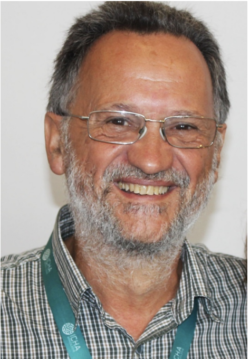
Education
Santiago (Santi) Fraga was born in 1952, close to his homeland Galicia (Spain) in Vila Nova de Gaia, in the North of Portugal. In 1975, Santi graduated from the Universidad Complutense de Madrid, Spain with a degree in Biological Sciences. From the very beginning of his career, Santi was driven by his fascination for the ecology of marine phytoplankton. In 1977, he joined the Spanish Institute of Oceanography (Instituto Español de Oceanografia-IEO) in Vigo to work on the red tide monitoring program of Galicia. There he had the opportunity to build a career working on his favorite subject – planktonic organisms. In 2014, he was awarded a PhD from the Universidade de Vigo, Spain, for his thesis on the taxonomical and ecological characterization of cryptic and pseudo-cryptic harmful dinoflagellates.
Life and Career
After completion of his undergrad studies, Santi began his scientific career in 1977 at IEO in Vigo, where he worked until his retirement in 2017. Very early in his career, Santi was involved in harmful algal bloom (HAB) research, participating on the establishment and development of the HAB monitoring program for the Galician Rías (1977-1992). Moreover, he was consulting on the implementation of monitoring programs in other coastal regions of Spain. In 1983, Santi participated in the “Phytoplankton Course for Experienced Participants” in Norway, where he had the opportunity to work with experienced taxonomists, as teachers and fellow students. This course opened new avenues and introduced him to the world of microalgae taxonomy and systematics which, later in his career, became one of his main fields of research. With a strong ecology background, he always had a multidisciplinary approach to the study of HABs. Santi was curator of the Culture Collection of Harmful Microalgae of IEO (CCVIEO) where he contributed to the isolation and culturing of numerous strains of planktonic and benthic microalgae from a wide geographic range. Many of these isolates were used as source material for the description of new dinoflagellate species.
Throughout his career, Santi mentored and trained numerous colleagues. He participated as teacher in countless courses of taxonomy organized by several organizations, such as the IOC-UNESCO, the Spanish Agency for International Development and Cooperation (AECID), the International Atomic and Energy Agency (IAEA), as well as courses organized by colleagues from Latin American universities.
Research strategy and mentoring
Santi’s research on HABs first concentrated on the dynamics of phytoplankton blooms in the Galician Rias, on which he published his seminal work about the role of upwelling in the development of HABs in Iberia. His efforts to clarify this relationship laid the foundations of today's understanding on the dynamics of toxic blooms in the Galician Rias. Santi has a special gift to grasp details and describe what he sees with exceptional accuracy. This naturally drove him into taxonomy. Santi’s contribution to the taxonomy of marine dinoflagellates begins with the description of Gyrodinium impudicum in 1995 (later transferred to Gymnodinium impudicum (S.Fraga & I.Bravo) Gert Hansen & Moestrup), and the clarification of its morphological differentiation from the toxic species Gymnodinium catenatum. During the last decade, he focused on the study of benthic dinoflagellates, in particular, the genus Gambierdiscus, responsible for ciguatera fish poisoning. The first ciguatera outbreaks on the Canary Islands, Spain, more than a decade ago, represented the first intoxications due to consumption of local fish in a European country. Santi discovered the causative organism in an opportunistic sampling trip to Tenerife. These findings led to the description of a new species, Gambierdiscus excentricus S. Fraga. Later, he described two additional species in genus Gambierdiscus, G. silvae F. Fraga & F. Rodríguez from the Canary Islands, and G. balechii S. Fraga, F. Rodríguez & I. Bravo from the Celebes Sea. His expertise and pioneer contributions on the genus Gambierdiscus have stimulated other research projects in the IEO of Vigo as well as in other national and international laboratories.
Santi was involved in the discovery of other new species, namely Barrufeta bravensis N. Sampedro & S. Fraga, Coolia canariensis S. Fraga, Prorocentrum caipirignum S. Fraga, M. Menezes & S. Nascimento, and Ceratocorys mariaovidiorum P. Salgado, S.Fraga, F. Rodríguez, P. Riobó & I. Bravo. Santi’s generous dedication and his pedagogical work have contributed to the progress of knowledge of HAB species worldwide, and particularly in Latin America and North Africa.
Santi has mentored: Nagor Sampedro, Pablo Salgado.
10 Key publications
Fraga, S., Rodríguez, F., Riobó, P., Bravo, I. (2016). Gambierdiscus balechii sp. nov (Dinophyceae), a new benthic toxic dinoflagellate from the Celebes Sea (SW Pacific Ocean). Harmful Algae 58:93-105. doi:10.1016/j.hal.2016.06.004
Fraga, S., Rodríguez, F. (2014). Genus Gambierdiscus in the Canary Islands (NE Atlantic Ocean) with description of Gambierdiscus silvae sp. nov. A new potentially toxic epiphytic benthic dinoflagellate. Protist. doi:10.1016/j.protis.2014.09.003
Parsons, M. L., Aligizaki, K., Dechraoui, M. Y., Fraga, S., Morton, S., Penna, A. & Rhodes, L. (2012). Gambierdiscus and Ostreopsis: reassessment of the state of knowledge of their taxonomy, geography, ecophysiology, and toxicology. Harmful Algae 14, 107-29. http://dx.doi.org/10.1016/j.hal.2011.10.017
Fraga, S., Rodríguez, F., Caillaud, A., Diogène, J., Raho, N., Zapata, M. (2011) Gambierdiscus excentricus sp. nov. (Dinophyceae), a benthic toxic dinoflagellate from the Canary Islands (NE Atlantic Ocean) Harmful Algae 11, 10-22. http://dx.doi.org/10.1016/j.hal.2011.06.013
Sampedro N., Fraga S., Penna A., Casabianca S., Zapata M., Grünewald C.F., Riobó P., Camp J. (2011). Barrufeta bravensis gen. nov. sp. nov. (Dinophyceae): a new bloom-forming species from the northwest Mediterranean Sea. Journal of Phycology 47:375–392. https://doi.org/10.1016/j.hal.2016.06.004
Fraga, S., Penna, A., Bianconi, I., Paz, B., Zapata, M. (2008). Coolia canariensis sp. nov. (Dinophyceae), a new non-toxic epiphytic benthic dinoflagellate from the Canary Islands. Journal of Phycology 44, 1060-1070. http://dx.doi.org/10.1111/j.1529-8817.2008.00555.x
Hallegraef, G.M., Fraga S. (1998). Bloom dynamics of the toxic dinoflagellate Gymnodinium catenatum, with emphasis on Tasmanian and Spanish coastal waters. In: The Physiological Ecology of Harmful Algal Blooms. D.M. Anderson, A.D. Cembella & G.M. Hallegraeff (Eds). pp. 59 - 80.
Springer-Verlag. Fraga, S., Bravo, I., Delgado, M., Franco, J.M., Zapata, M. (1995). Gyrodinium impudicum sp nov (Dinophyceae), a non-toxic, chain-forming, red tide dinoflagellate. Phycologia. 34, pp. 514 - 521. https://doi.org/10.2216/i0031-8884- 34-6-514.1
Fraga, S., Gallager, S.M., Anderson, D. (1989). Chain-forming dinoflagellates: an adaptation to red-tides. In: Red Tides: Biology, Environmental Science and Toxicology. Okaichi, Anderson & Nemoto (Eds.). pp. 281-284. Elsevier, New York.
Fraga S., Anderson, D.M., Bravo, I., Reguera, B. Steidinger, K., Yentsch, C.M. (1988). Influence of upwelling relaxation on dinoflagellates and shellfish toxicity in Ría de Vigo Spain. Estuarine and Coastal Shelf Science, 27: 349-361.
----
Prepared Ana Amorin, with a lot of help from Santi’s friends.

